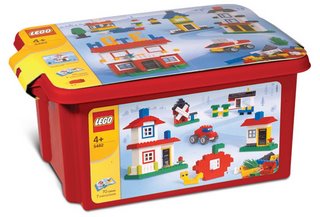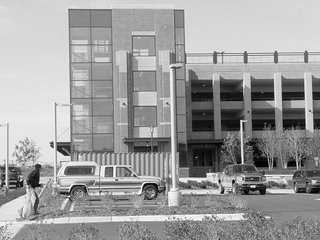WATCH OUT FOR LAME DUCKS. THEIR REMAINING TIME IN OFFICE CAN BE PACKED WITH MUCH TAX-AND-SPEND AND BORROW-AND-SPEND MISCHIEF.Luckily, the Ramsey Council has improved by adding two members to replace a pair of rubberstamp place holders. While we hope and await the new year, with new members John Dehen in Ward 3 and Matt Look at large taking office, we need to keep an eye on the lame duck period between election day and the new year. But that is not the complete answer.
THE EXAMPLE OF RAMSEY'S PHANTOM PORT AUTHORITY.The entire "Port Authority" effort, which in the absence of official explanations and 'fessing up to responsibility, shall be called the
"Pork Authority," needs citizen awareness and questioning during citizen input about what happened and who the role players were.
And it needs a citizen vote to improve holding office holders and administrative officials accountable.
We cannot vote all the rascals out on the two year election cycle, and in off-year elections we do not even have a shot at a new majority. That means only one thing - stronger Recall powers.
While improving Recall charter provisions, citizens can gain greater power to act per initiative and referendum avenues, by seeing all is enhanced while reordering Recall procedures.
We need to fix the Charter to allow two "Recall" things - easier means to remove elected councilmembers, and creation of a new citizen power to remove unsatisfactory administrative officials.
Read that as Jim Norman. Presently, we have no means to "recall" or oust him from office, despite his presently appearing to have spearheaded Ramsey Pork Authority activity.
For now, there is no other role-player identified in the effort, if a search of online documents is to be believed. From the City website homepage I opened the LaserFiche "documents" and did an exact and fuzzy search for the term "port authority," and got zero hits. No document returned with that term flagged.
IT WAS DONE TO YOU, NOT FOR YOU: THE RECORD SO FAR SHOWS THERE WERE INADEQUATELY DISCLOSED PORT AUTHORITY STEPS AFOOT STARTING IN MARCH 2006. THAT WAS WELL BEFORE ELECTION DAY, WITH JIM NORMAN APPARENTLY IN THE DRIVER'S SEAT. AND NOTHING WAS SAID ABOUT IT BY ANY OF THE INCUMBENTS TO INFORM RAMSEY VOTERS BEFORE ELECTION DAY. In addition to facts set out in an earlier posting
here and
here, consider these two compelling facts:
First, somebody coaxed Jim Abeler and Mike Jungbauer into sponsoring identically worded parallel house and senate bills; 84th Session,
HF 3289 (posted March 8, 2006) and
SF 3141 (posted March 13, 2006), each stating:
A bill for an act relating to local government; granting port authority powers to the city of Ramsey;proposing coding for new law in Minnesota Statutes, chapter 469. BE IT ENACTED BY THE LEGISLATURE OF THE STATE OF MINNESOTA:
Section 1. [469.0805] RAMSEY. The governing body of the city of Ramsey may exercise all the powers of a port authority provided by sections 469.048 to 469.068.
Second, we see that at least once Jim Norman even "testified" before a legislative committee about the Pork Authority, probably stating his planning and Ramsey's alleged "need" although the record seems scant;
see, e.g., March 16, 2006, Minnesota House Local Government Committee Minutes,
stating in a less than notoriously prominent manner:
HF3289 (Abeler) Ramsey; port authority powers granted.
PETERSON, Neil moved to recommend HF3289 pass and be re-referred to the Committee on Taxes.
The following provided testimony on and responded to the Committee’s questions regarding HF3289:
Representative Jim Abler; and Jim Norman, City Administrator, City of Ramsey, 15153 Nowthen Blvd NW, Ramsey, MN, 55303.
There being no further testimony, pro or con, the question reoccurred on the Peterson Motion to recommend HF3289 pass and be re-referred to the Committee on Taxes. THE MOTION PREVAILED.
So it was done to us. The who/how of Jim Norman showing up and no one else is clothed in mystery, and no contrary testimony was given because, presumably, neither Abeler nor Jungbauer knew of any opponents to the idea.
Please, everyone reading this, contact your ward councilmember and Strommen, the holdover at large member, Cook the lame duck at large member, and Matt Look, the new at large rep., and tell them what you think of such planning going on largely off-the-record and behind peoples' backs. To me it is a shameful thing where those responsible should be called to task.
WHY WORRY? BECAUSE IT CAN BE BORROW-AND-SPEND AND TAX-AND-SPEND LIKE YOU'VE NOT SEEN BEFORE.And you may have felt protected.
Recall that simple bill sentence, "
The governing body of the city of Ramsey may exercise all the powers of a port authority provided by sections 469.048 to 469.068."
That means the council being set to gain this power without formally ever passing a resolution or ordinance asking for it.
Nor was it mentioned by Ramsey officials it in any way for voters to catch wind of it to take precautionary steps, or to bring up the question during a televised citizens' input meeting segment or to weigh the situation at the ballot box.
Who is Jim Norman, doing these things as if he's king of Ramsey or some such?
And what's the risk? Well, look at it this way: What about the bill-referenced "sections 469.048 to 469.068" and taxpayer effects? There's more detail than in this short posting answer, but the gist of the following quote could make you swallow your dentures, so exercise due care:
469.060 General obligation bonds.
Subdivision 1. Power; procedure. A port authority
may issue bonds in the principal amount authorized by its city's
council. The bonds may be issued in anticipation of income from
any source. The bonds may be issued: (1) to secure funds
needed by the authority to pay for acquired property or (2) for
other purposes in sections 469.049, 469.050, and 469.058 to
469.068. The bonds must be in the amount and form and bear
interest at the rate set by the city council. Except as
otherwise provided in sections 469.048 to 469.068, the issuance
of the bonds is governed by chapter 475. The port authority
when issuing the bonds is a municipal corporation under chapter
475. Notwithstanding any contrary city charter provision or
any general or special law, the bonds may be issued and sold without
submission of the question to the electors of the city, provided
that the ordinance of the governing body of the city authorizing
issuance of the bonds by the port authority shall be subject to
any provisions in the city charter pertaining to the procedure
for referendum on ordinances enacted by the governing body.
Subd. 2. Outside debt limit. Bonds issued by the
port authority must not be included in the net debt of its city.
Money received under this section must not be included in a per
capita limit on taxing or spending in the port authority's
city's charter. The authority is also exempt from the limit.
[...]
Subd. 5. Pledge. The bonds must be secured by the
pledge of the full faith, credit, and resources of the issuing
port authority's city. The port authority may pledge the full
faith, credit, and resources of the city only if the city
specifically authorizes the authority to do so. The city
council must first decide whether the issuance of the bonds by
the authority is proper in each case and if so, the amount of
bonds to issue. The city council shall give specific consent in
an ordinance to the pledge of the city's full faith, credit, and
resources. The port authority shall pay the principal amount of
the bonds and the interest on it from taxes levied under this
section to make the payment or from authority income from any
source.
Subd. 6. Tax levy. A port authority that issues
bonds under this section, shall, before issuing them, levy a tax
for each year on the taxable property in the authority's city.
The tax must be for at least five percent more than the amount
required to pay the principal and interest on the bonds as the
principal and interest mature. The tax must be levied annually
until the principal and interest are paid in full. [...]
Is there a two edged sword? Yes, that's right, there are only quite limited (but quite express) ways the charter can save taxpayers from gross abuse and we need to use them, pronto, for the handwriting on the wall is disturbing. What this means is
we must be smart citizens.
But the expedient dodge of a charter election by opining that proposed charter changes are "unlawful" is curtailed because
the statute explicitly requires that any "ordinance of the governing body of the city authorizing issuance of the bonds by the port authority shall be subject to any provisions in the city charter pertaining to the procedure for referendum on ordinances."That means we should promptly begin an effort to streamline charter provisions giving citizens power under "provisions in the city charter pertaining to the procedure for referendum on ordinances."
We gain that certitude in direction, with limitations. We
can specify our own destiny.
And if we do not, there's no limitation to the Pork Authority saddle taxpayers will potentially have to carry. Protections in other ways are experssly absent once a "Pork Authority" menace is created and set about its mischief and meanderings with an authorizing bonding ordinance.
IT IS A BLANK PORK AUTHORITY CHECK YOU MAY BE FACING, WITH YOUR MONEY AT RISK. CONSIDER IT AS THAT AND NOTHING LESS. THEN WORRY, WORRY A LOT.
IT IS ONLY THE COUNCIL'S JUDGMENT BETWEEN YOU AND A POTENTIALLY DEVESTATING DESTINY. AND AFTER THE WAY LEGISLATIVE EFFORTS WERE HIDDEN, WHO DO YOU TRUST? THEM, OR YOURSELF?
THE ULTIMATE STEPS WE CAN TAKE TO REFORM THE PROCESS.Again, my bottom line long-term answer is for us to amend the charter.
We should specify comparably straightforward and easily met procedures for initiative, referendum and recall, as we enjoy under Minnesota statutory law providing for amending a city's home rule charter.
We can make our "referendum on ordinances" charter provisions even easier to use, to be suitably protective of citizen rights. Unless the lame ducks have their way with us before we act (that lack of good faith always
is possible) we can simplify signature and petition formats and requirements, mandate an election timeframe, and forestall mischief.
THERE HAVE TO BE MORE FACTS UNCOVERED. WE NEED BOTH HONESTY AND CANDOR FROM THE COUNCIL TABLE AND WE NEED IT BEFORE IT IS TOO LATE.This
is a developing story. I have yet to fully research bill progress and legislative actions last session; a damage assessment; and to review the law on "port authority" entities. That would disclose the potentials for abusive added taxes and added debt load on the city residents.
But even now - who is Jim Norman, and who does he think he is to go about lobbying for a "pork authority" without any formal council authorization by ordinance or resolution.
Why was there no prior ordinance or resolution for Norman's activity back in March 2006?
My guess, there was an election then a half year off, and the cowardly thing to do is to plan secretly but not disclose what's up, in order to not fare worse at the ballot box.
Things can only be inferred at this time, and there
may be a wholly honorable explanation of things. But lacking any explanation for now
it is fair to infer dishonorable possibilities.


































